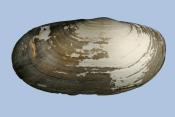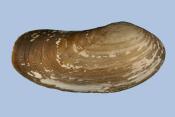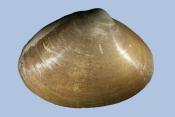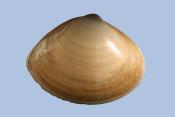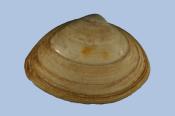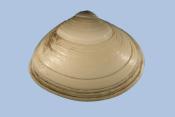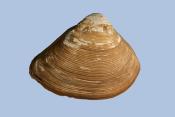This group includes some of the commonest molluscan species of the UK with densities of up to 8000 per square metre having been recorded over large areas of the Dogger Bank. They are generally triangular-oval in shape with a slight gape to the posterior end of the shell. The shells have prominent lateral teeth and most possess a V-shaped pair of cardinal teeth (though these are often broken off).
They live buried, generally in sand where they feed by filtering plankton from the water through a pair of siphons (which are joined through-out their length). The sexes are separate with eggs and sperm released into the water in spring where fertilisation occurs. The larvae have a short plantonic phase before settling and developing into adults.
Despite the abundance of some of the species the group is not commercially exploited to any great extent in the UK (though more effort has been made in Ireland). Elsewhere in Europe and America there are fisheries particularly for Spisula solida but also Mactra stultorum. Spisula in particular has a sweet delicate flavour and is used in soups, sauces and pasta dishes for example.
| Lutraria angustior | Lutraria lutraria | Lutraria magna | Mactra glauca |
| Mactra stultorum | Spisula elliptica | Spisula solida | Spisula subtruncata |

